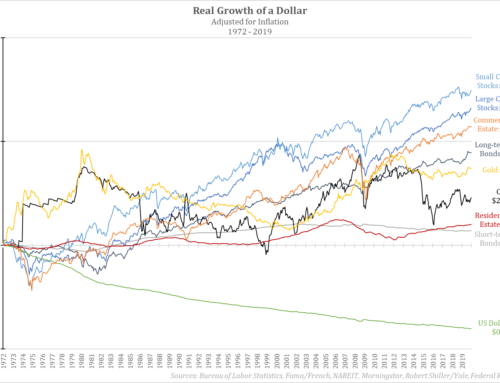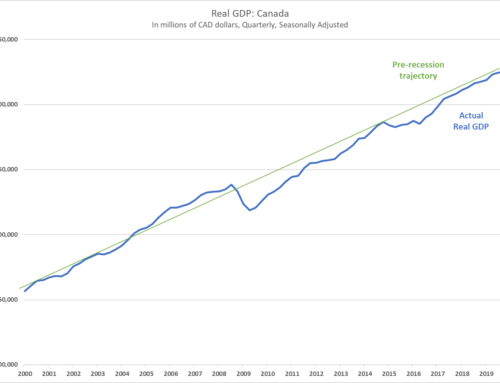Remember a couple weeks ago when we talked about peak new cases being an important milestone:
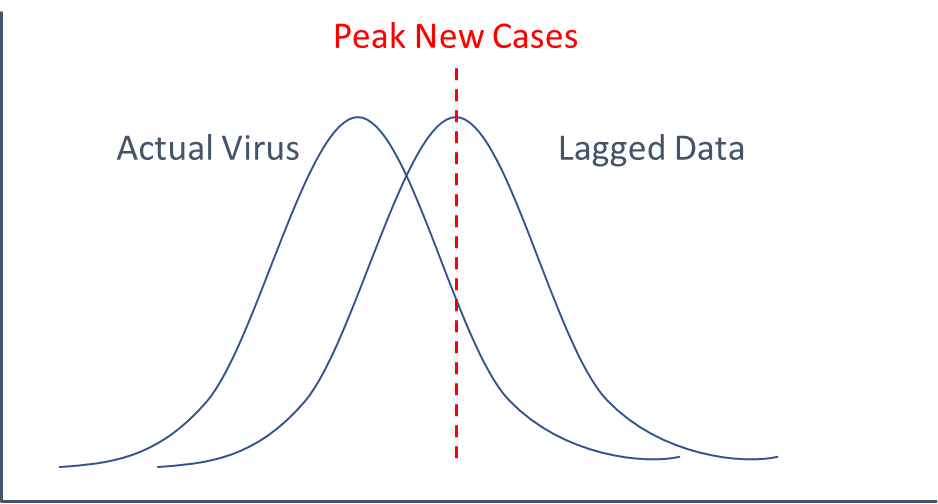
The last couple days of data may have some tentative good news in it:
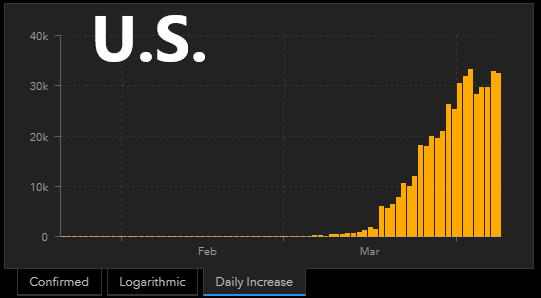
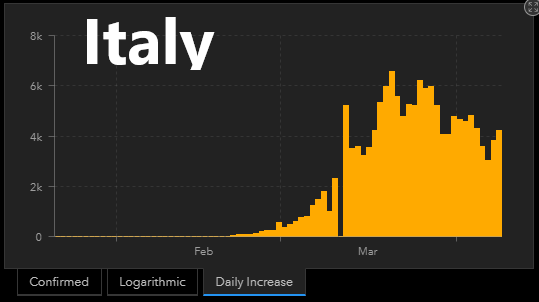
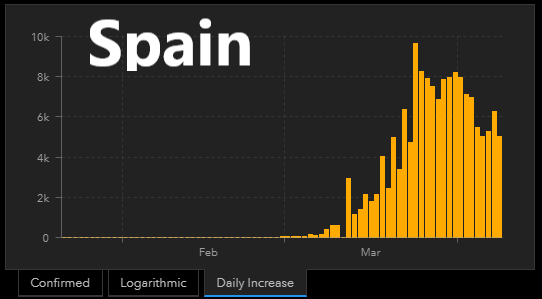
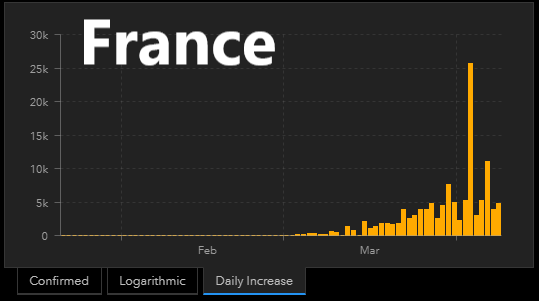
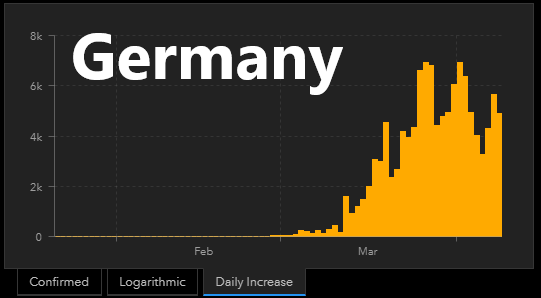
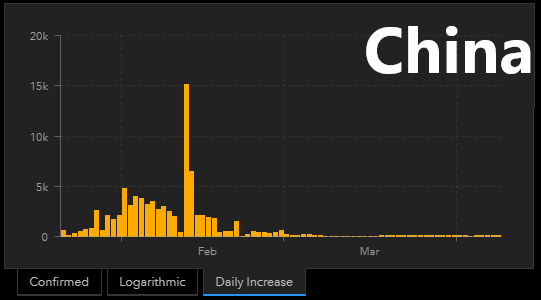
We all want to know what happens from here. No one knows. The best we can use are projections and models – which are informed guesstimates at best. The folks at the University of Washington’s IMHE seem to be leading the pack as far as projections showing peak hospital resource use (although they’ve been criticized for being too optimistic). And they are the first to say this is only a model, and not real life, but in the absence of anything better, it’s all we have to go on for now:
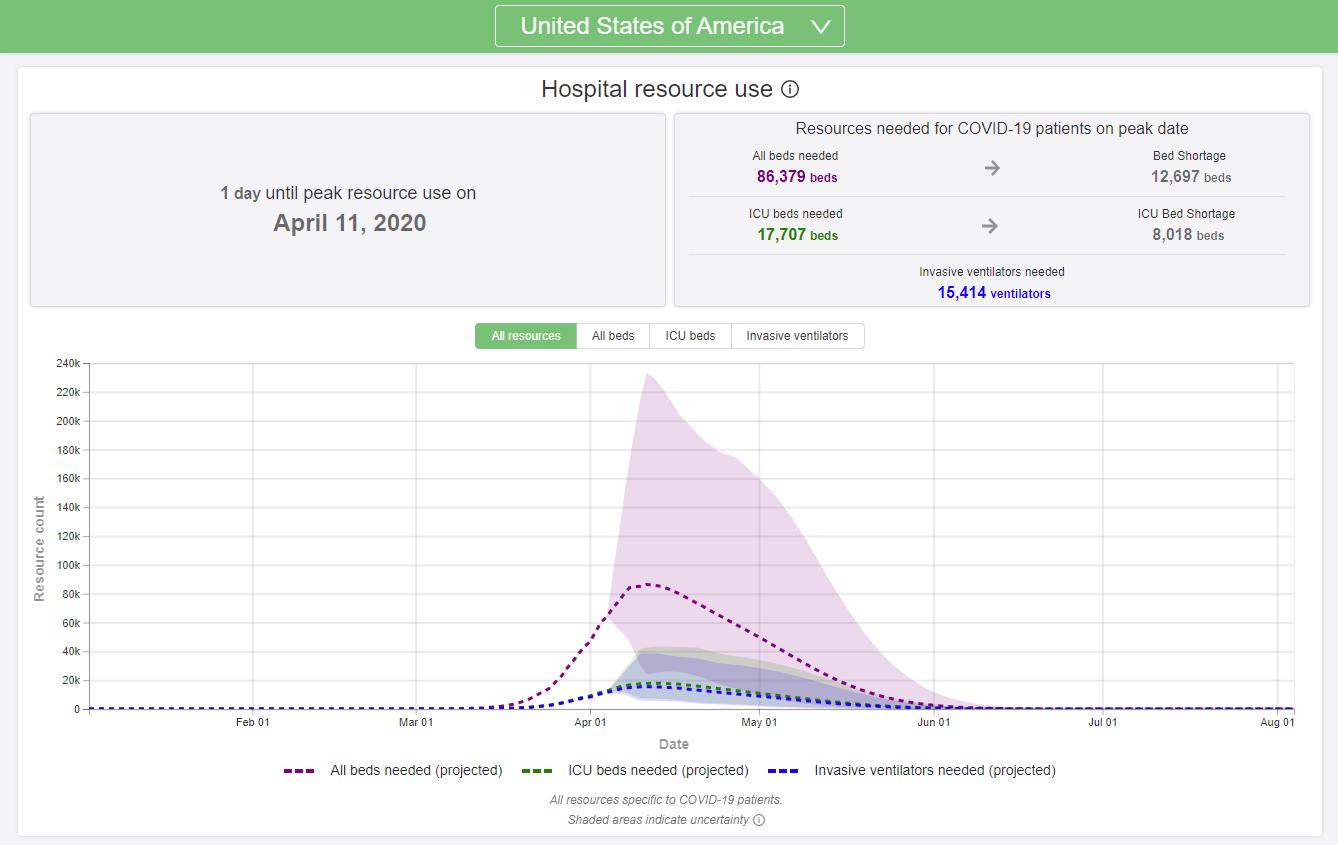
We know that roughly 80-85% of all cases are mild to moderate in nature and recovery will happen at home. But that also means roughly 15-20% of cases will require hospitalization, and a portion of these will be severe enough to warrant intensive care. The folks at IMHE set out to model just how bad this would strain our medical resources, which would ultimately influence case recoveries and mortalities.
How to read their model:
- The dashed purple line above shows projected regular hospital beds needed in the coming days (the shaded purple area shows the wide margin-of-error they’ve openly acknowledged in their projections).
- The dashed green line shows projected ICU beds needed by date.
- The dashed blue shows ventilators needed by date.
Here is the critical summary (found in the upper right of each state graph below as well):

This is the US as a whole. But we know the US is comprised of several hot spots:
NEW YORK:
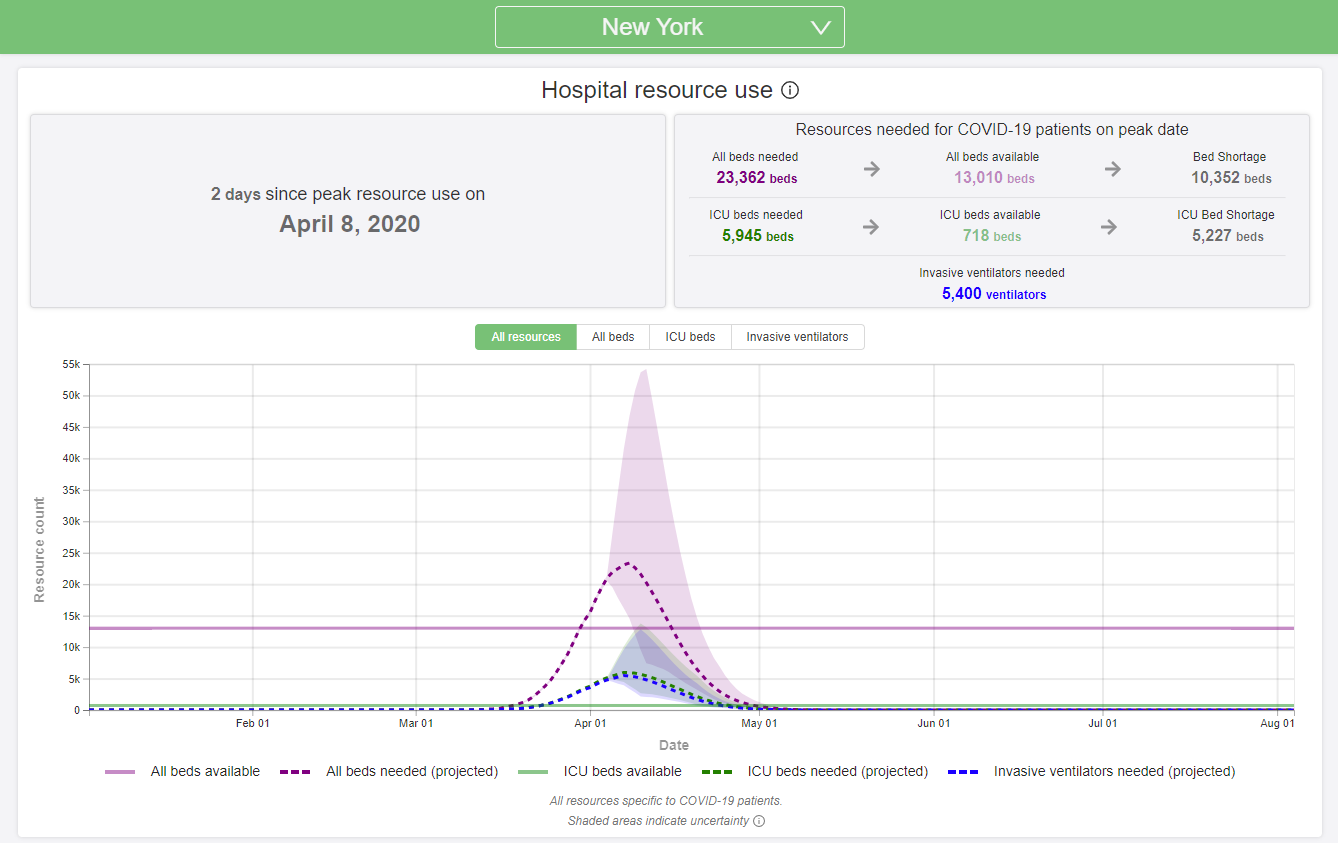
NEW JERSEY:
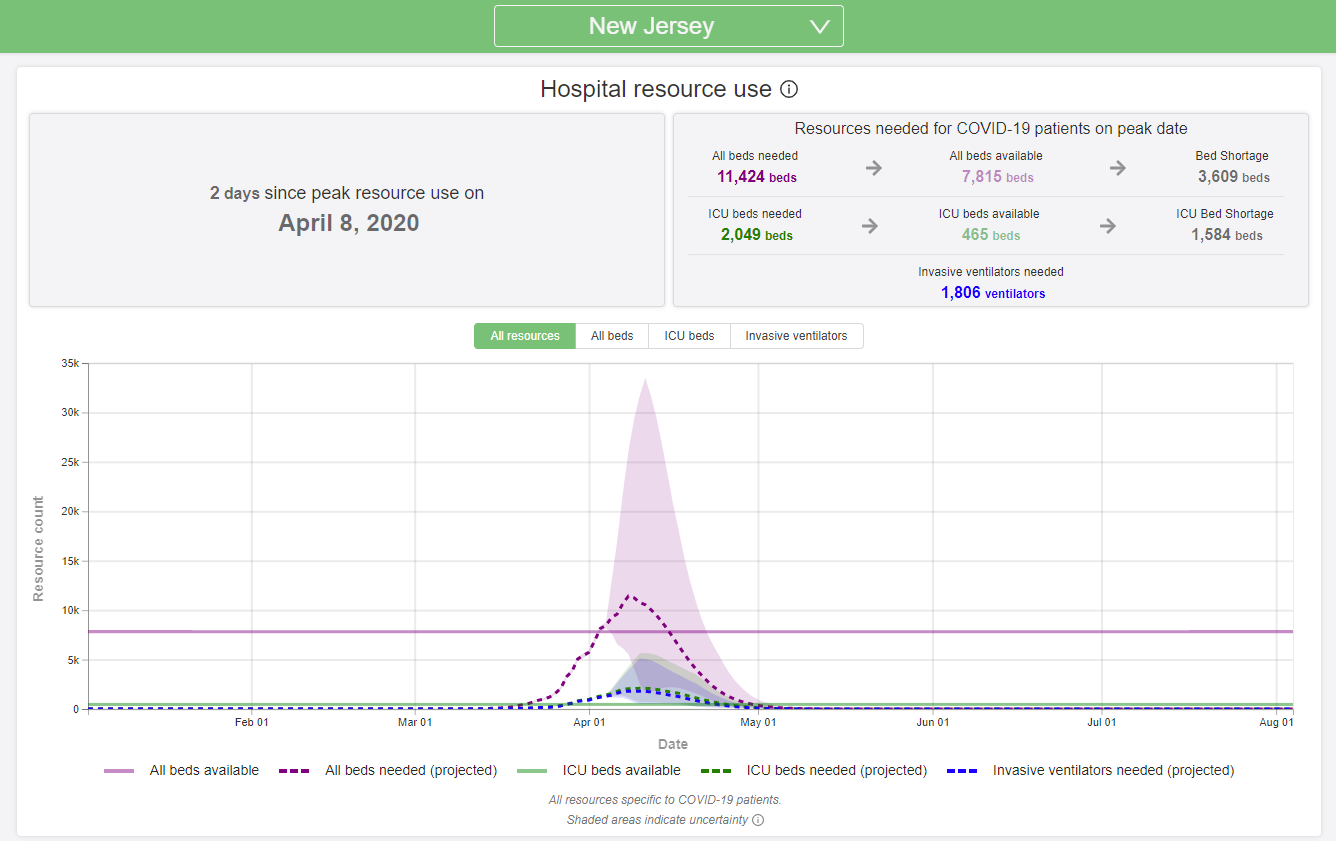
LOUISIANA:
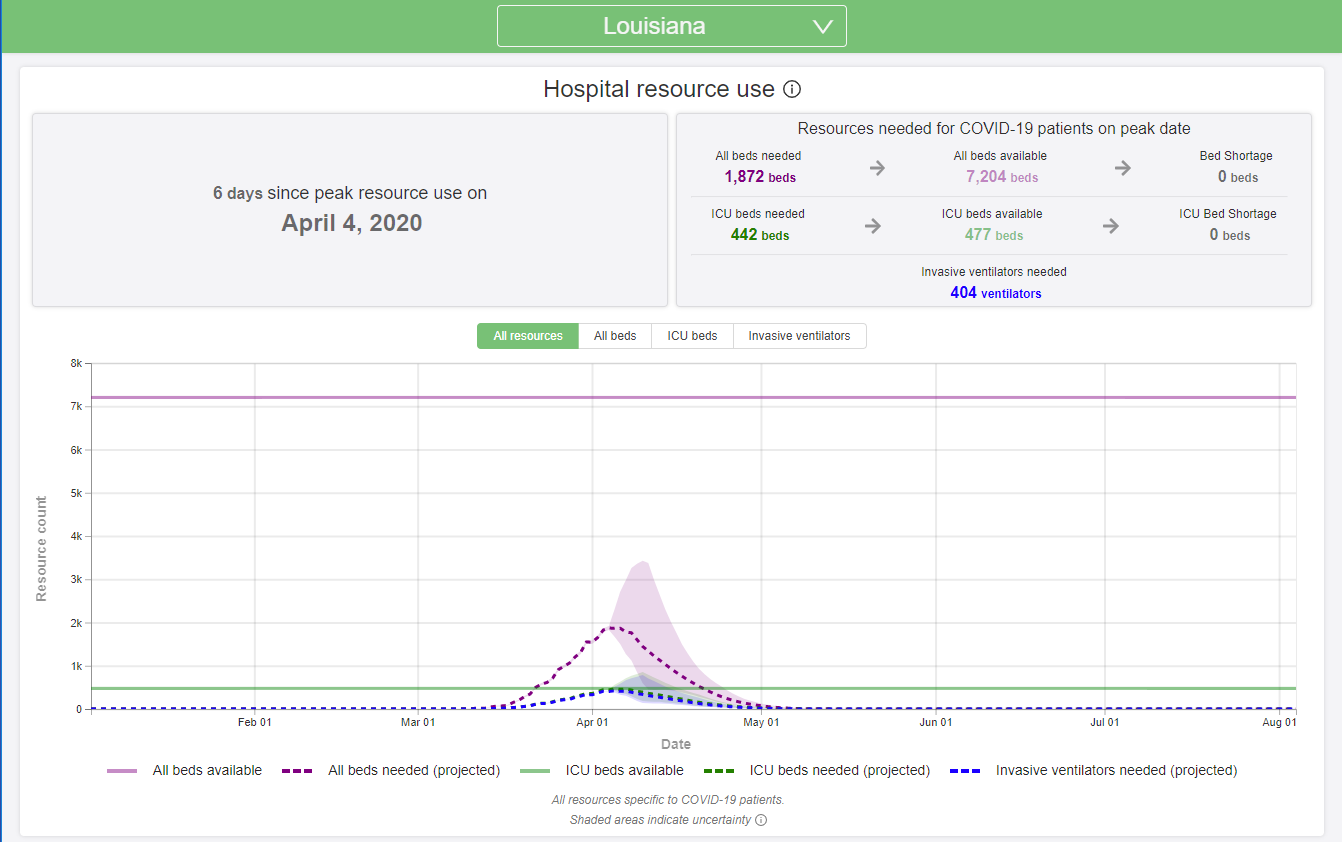
And several not-so-hot-spots:
IDAHO:
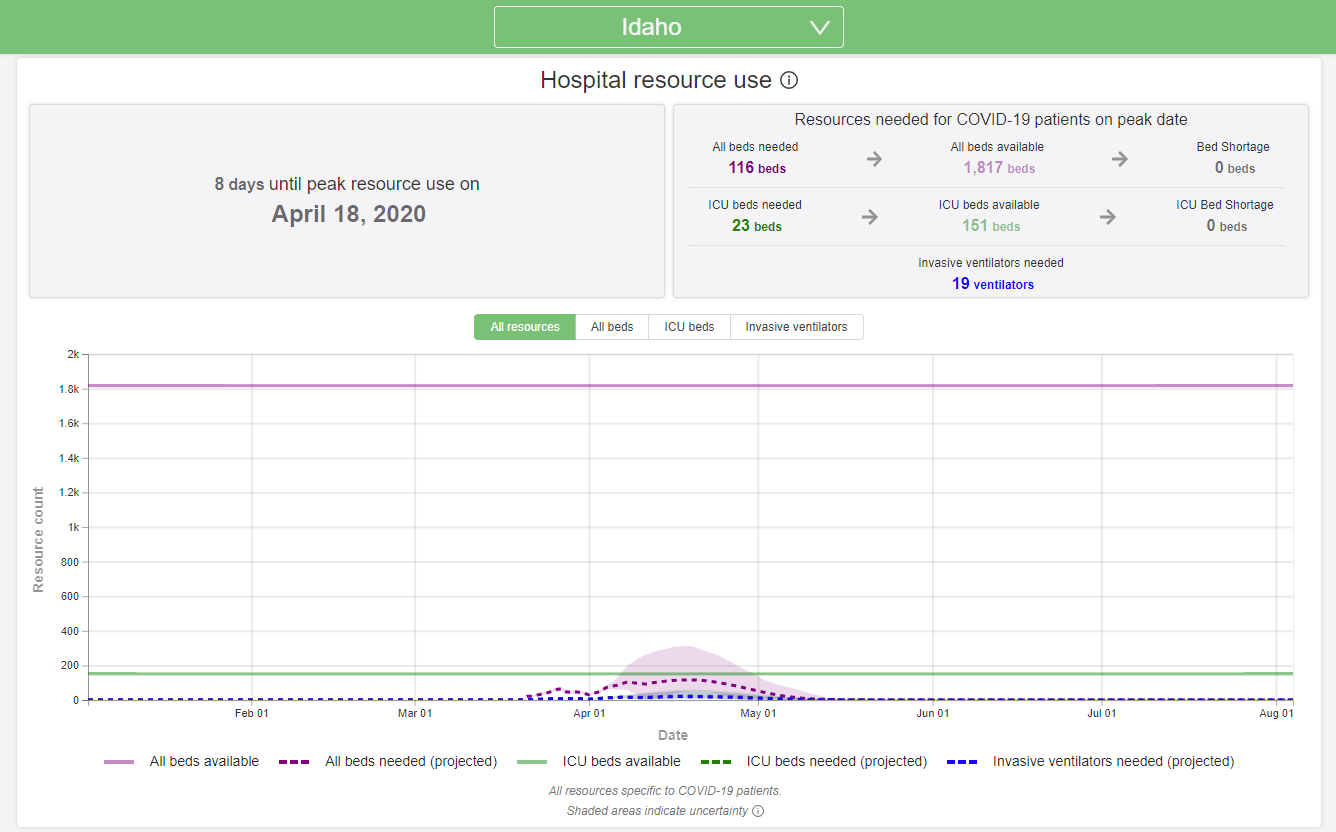
UTAH:
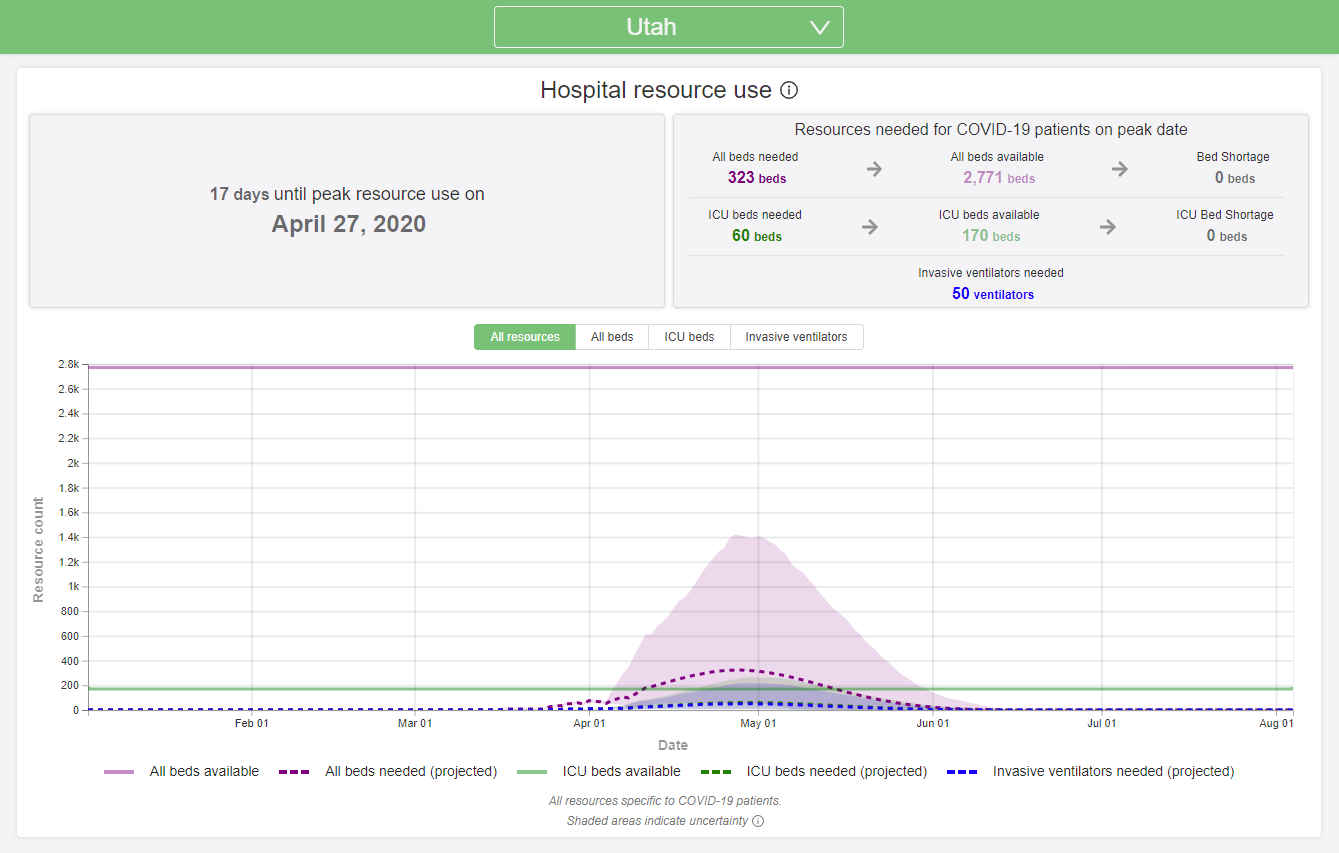
MONTANA:
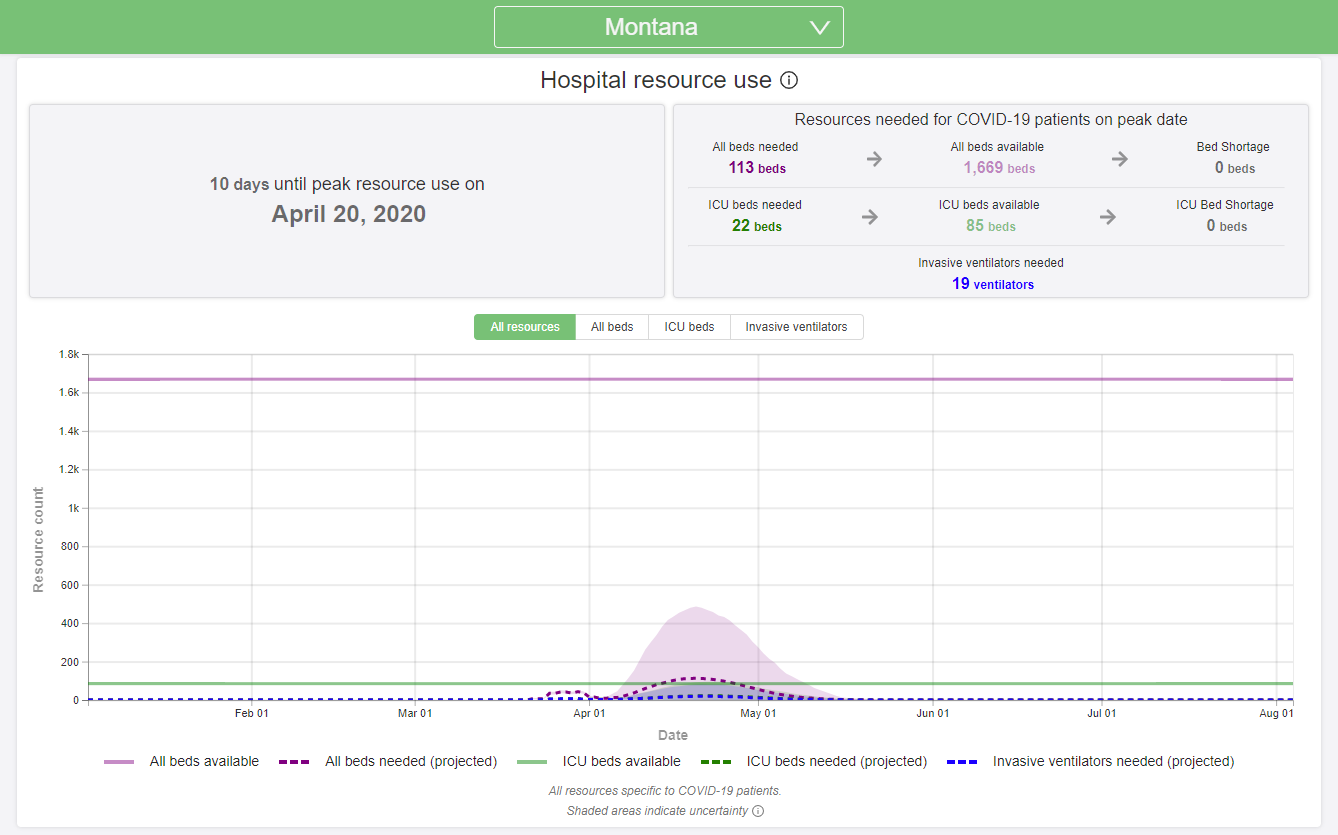
And even CALIFORNIA:
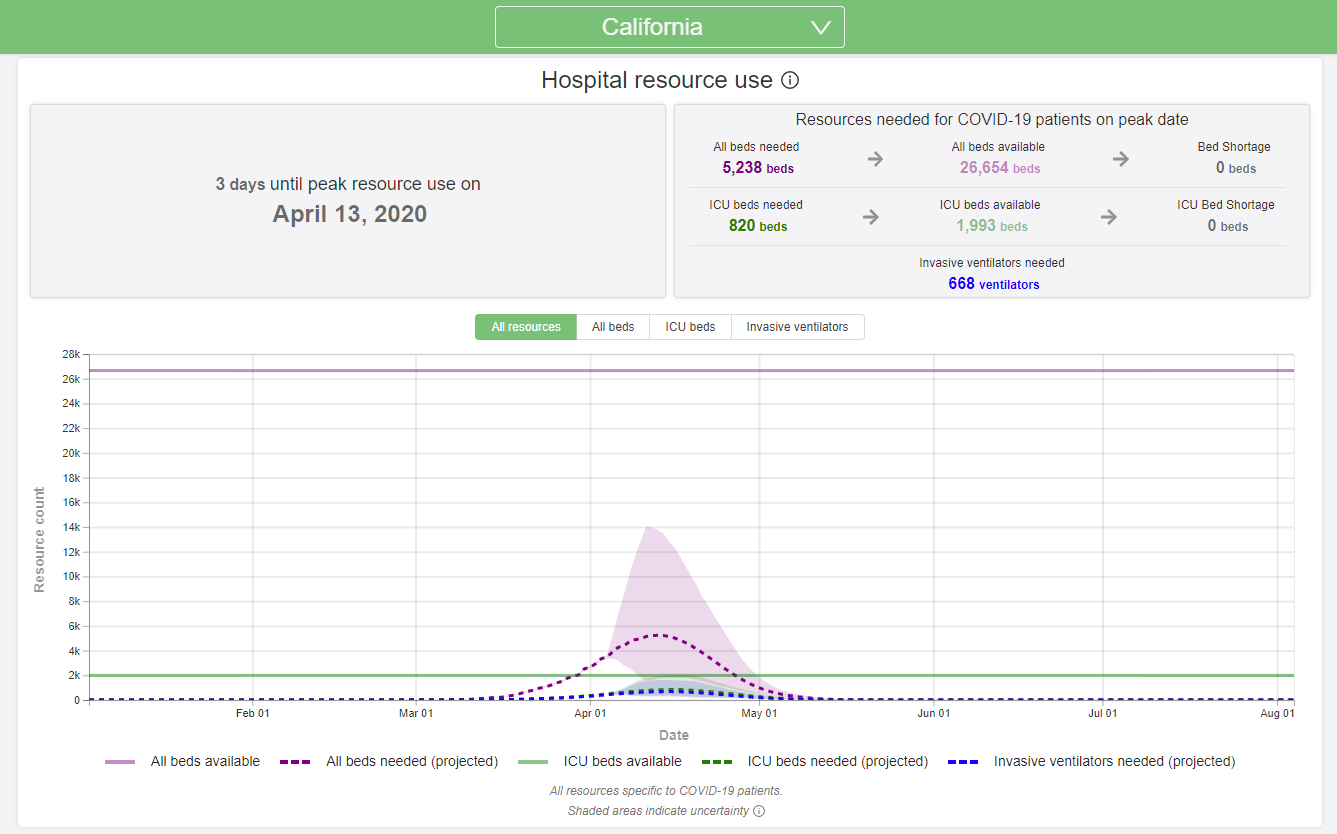
Go check any other state in their model here.
Again, this is not an oracle, just a model.
But that doesn’t mean it’s time to spike the football yet. We’re in a tight spot. These lockdowns are working as far as flattening the curve, but now we have to get America back to work again. The longer these lockdowns continue, the deeper the recession. The deeper the recession, the fewer companies survive. The few companies that survive, the more folks we have unemployed and without an income.
The Federal Reserve has made it very clear they will step in to prevent any system-wide liquidity issues, and Congress has thrown a financial kitchen-sink at it:
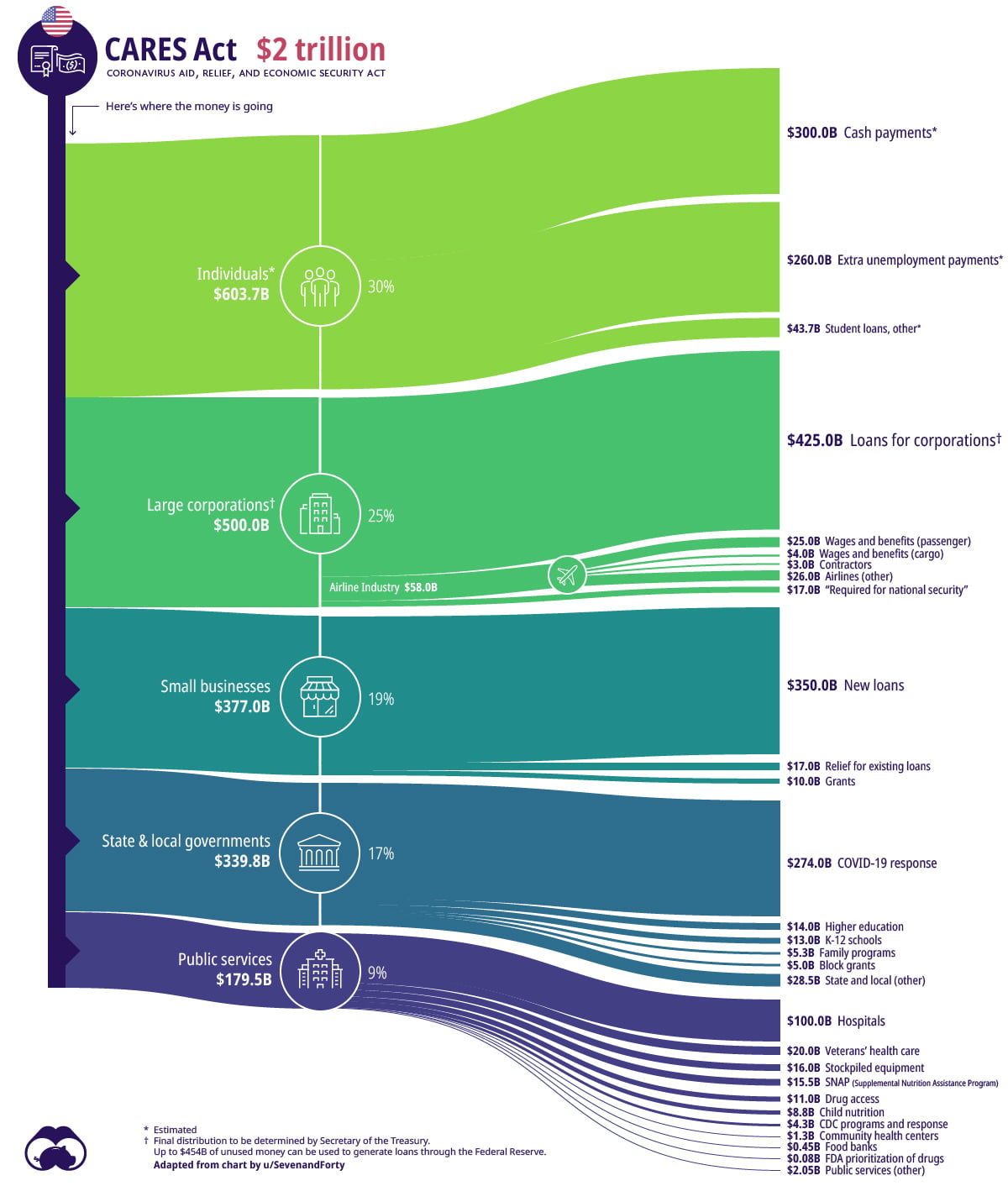
Our unemployment has already jumped from 3.5% just a month ago to ~15% today. But those numbers need to be taken with the biggest grain of salt you can find, as the federal government is temporarily incentivizing folks to file for unemployment to encourage them to stay home.
Do the math: if I make $10.00 an hour, my state unemployment benefit will be approximately $200 a week. If Congress kicks in another $600 a week, then my total compensation is now $800 per week, or almost $20.00 an hour – twice what I normally make – TO STAY HOME! Who wouldn’t file for unemployment under those circumstances?! This program is set to expire July 31, 2020, but you can see why we’ll have abnormally elevated unemployment numbers for a while.
The news is starting to look better. But we have a long road in front of us. Our attention now turns to restarting an economy we pulled the emergency brake on, and getting folks back to work without flaring the virus for another round.

